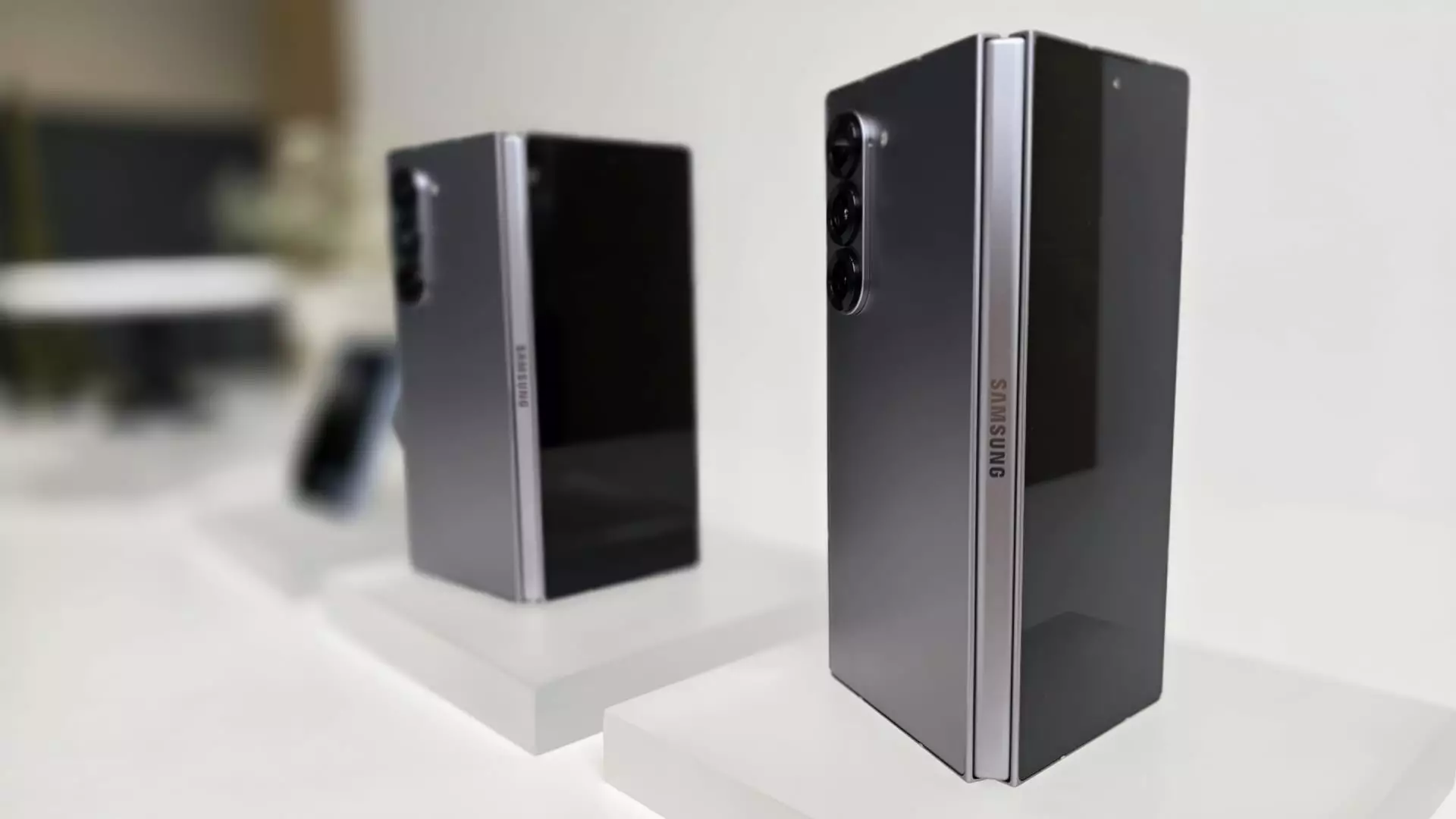The smartphone landscape is undergoing a revolution, with foldable phones at the forefront of this evolution. Samsung, a tech giant synonymous with innovation, appears to be turning a new leaf in its ambitious quest to reclaim dominance in the foldable segment. As it gears up for an anticipated launch next month, the spotlight is firmly placed on its forthcoming release—a thinner version of its flagship foldable device. This initiative comes amidst an intense competition from Chinese manufacturers, notably Honor and Oppo, pushing the boundaries of device design towards increasingly slim and lightweight offerings.
The market for foldable technology emerged into prominence with Samsung’s pioneering efforts in 2019. Yet, in a twist of fate, overseas rivals have swiftly caught up—leveraging their designs to create narrow, nimble alternatives that appeal to the discerning consumer. The quest for thinner devices does not merely stem from aesthetics; it reflects a fundamental shift in consumer expectations—people increasingly resist heavier devices, preferring sleek innovations that incorporate functionality without sacrificing portability.
The Importance of Slim Designs
According to Ben Wood, a prominent analyst at CCS Insight, the new age of foldables necessitates a re-evaluation of what consumers desire in their gadgets. “People simply won’t tolerate a bulkier design anymore if they’re promised the real estate that folding phones can deliver,” he emphasizes. This demand for thinner profiles could be a game-changer, enabling brands like Samsung to re-engage users who might have bracketed foldable phones as cumbersome or unnecessary.
For context, consider the specifications of the current offerings. Samsung’s recent Z Fold6, marketed as one of their flagship devices, stands at a thickness of 12.1 millimeters when folded and weighs 239 grams—a sturdy device by traditional standards, but one that pales in comparison to new entrants. On the contrary, the Oppo Find N5 boasts a sleeker 8.93-millimeter thickness at 229 grams, while the Honor Magic V3 further impresses with its 9.2-millimeter profile and a weight of just 226 grams. The inherent advantage of these slimmer designs is not merely in their weight; they signify an evolution towards a design philosophy that prioritizes user experience, comfort, and portability.
Push for Innovation Against Competitive Rivals
As Samsung prepares for its upcoming launch, the narrative is clear: the brand recognizes a critical need to enhance not only the thinness of its devices but also the overall experience they encapsulate. In a preview of the new Galaxy Z series, Samsung has confidently proclaimed that they are stepping into uncharted territory—with this release being touted as the “thinnest, lightest, and most advanced foldable yet.” This optimistic outlook aims to illustrate that Samsung is not merely reacting to competition but is intent on reshaping the foldable narrative altogether.
However, the stakes are high. Honor’s imminent rollout of the Magic V5 adds renewed pressure on Samsung to deliver a standout product that competes effectively in both functionality and style. Analysts predict that if Samsung can mirror the thinness of its rivals, it could lead to substantial enhancements in design centered on user engagement—a step toward regaining market share and consumer confidence.
The Broader Landscape of the Foldable Market
Despite these ambitious advancements, it is essential to consider the broader context of the foldable market. Industry forecasts indicate that foldables will only represent around 2% of the entire smartphone sector this year, highlighting the uphill battle faced by manufacturers eager to make foldables mainstream. While thinner devices might arguably rekindle interest, it’s not just about physical attributes. Consumer perceptions and understanding of the foldable paradigm need a shift; as experts suggest, many users often remain skeptical about the practical necessity of a folding phone.
Often regarded as a luxury or novelty, the market’s slower uptake has led to debates within tech circles regarding the actual value such devices offer compared to traditional smartphones. Ming-Chi Kuo of TF International Securities hints at potential new entrants into this niche, including Apple’s rumored plans for a folding iPhone as early as next year. The move could potentially pave the way for further mainstream integration of foldables.
Thus, while the ambition to reduce thickness and weight in the foldable smartphone market represents a significant technological leap, it also necessitates a pivotal change in consumer engagement. As Samsung and its rivals race towards slimmer designs, the question remains: will these innovations sufficiently alter perceptions, leading foldable phones to become an essential part of the tech landscape, rather than a fleeting trend?


Leave a Reply